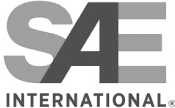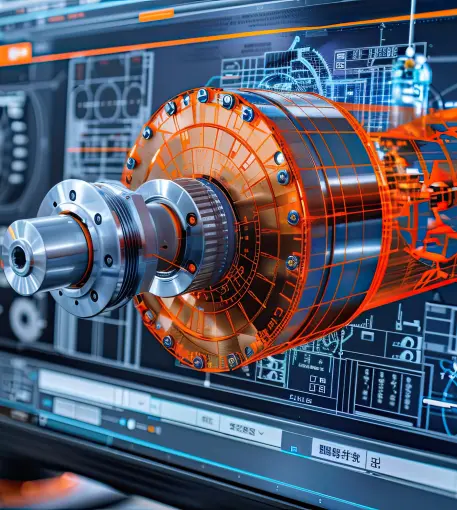2025 ASME Boiler and Pressure Vessel Code

7,500+ industry leaders worldwide are growing with us




Partnering with 450+ Standards Publishers Worldwide





Bonus: When you pre-order, you’ll gain access to our members-only webinar featuring ASME experts, covering key updates and offering a live Q&A session. This is your opportunity to learn about key changes to the code and get answers to your specific questions.
ASME’s BPVC standards are the most comprehensive resource for technical data on manufacturing, constructing, and operating boilers and pressure vessels. These standards, developed by leading industry experts, are designed to meet the evolving needs of a dynamic industry.
This essential resource outlines the 2025 BPVC’s key sections and how they help professionals ensure safety and compliance across various sectors.
Explore the Key Sections of the 2025 ASME BPVC
Several key sections comprise the ASME Boiler and Pressure Vessel Code, each addressing different aspects of design and construction. These sections ensure the safety and reliability of pressure vessels and boilers, providing guidelines that influence global safety standards and serve as benchmarks for local regulations, including the ASME pressure vessel code.
Key sections include BPVC Section I for power boilers, BPVC Section VIII for pressure vessels, and BPVC Section IX for welding and brazing qualifications. Each plays a pivotal role in setting standards for design, construction, and inspection.
- 2025 ASME BPVC Section I: Standards for Power Boilers
- ASME BPVC Section VIII: Pressure Vessels
- 2025 ASME BPVC Section IX: Welding and Brazing Qualification Standards
2025 ASME BPVC Section I: Standards for Power Boilers
ASME BPVC Section I sets requirements for the design and construction of power boilers, ensuring safe operation under high pressure. This section is crucial for those involved in constructing or maintaining power boilers, outlining guidelines to prevent accidents and ensure long-term reliability.
ASME BPVC Section I also includes specifications for ferrous and nonferrous materials, detailing essential properties for safety and durability. By following these standards, engineers and manufacturers ensure power boilers can withstand demanding operational conditions.
ASME BPVC Section VIII: Pressure Vessels
ASME BPVC Section VIII is one of the most comprehensive sections, outlining standards for pressure vessel construction. It is divided into three divisions, each covering different types of pressure vessels and their specific requirements.
Division 1 covers construction rules for simpler, lower-risk pressure vessels. Division 2 emphasizes advanced design methods for higher-risk vessels, with stringent criteria for safety and reliability. Division 3 addresses high-pressure hydrogen applications for vessels operating above 70 MPa.
Originally, ASME BPVC Section VIII applied to vessels over 6 inches in diameter, with a volume over 1.5 feet, and operating under pressure over 30 psi. These criteria have evolved to address changing needs and advances in pressure vessel technology.
2025 ASME BPVC Section IX: Welding and Brazing Qualification Standards
ASME BPVC Section IX provides guidelines for qualifying welding and brazing procedures, ensuring they meet stringent ASME BPVC standards. Welding procedures must adhere to these standards to ensure quality and safety in pressure vessel construction.
This section mandates detailed documentation of welding procedures and welder qualifications, ensuring compliance and safety. Following these guidelines ensures the integrity of welded joints, crucial for the overall safety and reliability of pressure vessels.
Design and Fabrication Under the ASME BPVC
Accounting for external pressure is a critical aspect of pressure vessel design, often more challenging than internal or external pressure. Advanced design methods like Finite Element Analysis (FEA) can enhance reliability, especially for complex structures like an oval nozzle.
ASME code cases serve as approved deviations from standard construction requirements, offering flexibility in engineering practices. They provide immediate solutions to urgent needs in materials and construction, ensuring the industry can adapt to new challenges and technologies.


Compliance and Certification
Pressure vessel manufacturers must obtain Certificates of Authorization (COA) from ASME to manufacture ASME pressure vessels that comply with the ASME Code. This certification process ensures that design, fabrication, and inspection are conducted under an approved quality control system, maintaining high standards of safety and reliability.
The COA requires manufacturers to maintain stringent quality in fabrication and documentation, allowing them to bid and manufacture ASME code vessels. This rigorous process underscores the importance of compliance in maintaining the integrity and safety of pressure vessels.
2025 ASME BPVC Testing Methods and Inspection Standards
These standards offer essential technical data that guide manufacturing processes, ensuring every component meets stringent safety and quality criteria. Covering aspects from material selection to fabrication and testing protocols, the ASME BPVC ensures the production of safe and reliable pressure vessels.
Moreover, the ASME BPVC impacts local regulations and practices, shaping how pressure vessels are handled across different regions. This global influence underscores the importance of understanding and adhering to these standards, as they are integral to ensuring the safety and efficiency of pressure vessel operations worldwide.
2025 ASME BPVC Structure and Organization Explained
The ASME BPVC is structured to cover all aspects of pressure vessel design, construction, and inspection. It defines a pressure vessel, detailing the necessary components, acceptable pressure levels, and standards for fabrication and inspection. This approach ensures every aspect of design and operation adheres to stringent safety criteria.
Key components of pressure vessel design codes include:
- Design criteria
- Material selection
- Stress evaluation
- Inspection
- Quality control
- Testing
- Certification
The Maximum Allowable Working Pressure (MAWP), slightly higher than the design pressure, is vital for safety evaluations.
This framework ensures high pressure vessels are designed for efficient function and to withstand operational pressures.
The Evolution of the ASME Boiler and Pressure Vessel Code up to 2025
The ASME BPVC was established to improve safety following serious boiler explosions in the early 1900s. The first edition, published in 1915, contained 114 pages, marking the start of formal regulations in this field.
Since then, the ASME BPVC has evolved significantly and now encompasses 28 books covering diverse aspects such as construction, inspection, and nuclear power components. Biennial updates reflect current safety practices and technologies, ensuring that the code remains relevant and effective in preventing overpressure and other hazards.
2025 ASME BPVC Inservice Inspection Requirements
Material selection is critical in pressure vessel design, governed by stringent ASME BPVC criteria. The selection process considers factors such as temperature limits, pressure ratings, and material durability. Ferrous materials, including carbon and alloy steels, are widely used for their high strength and affordability, though their susceptibility to corrosion can limit their applications at higher temperatures.
Nonferrous materials, such as aluminum and copper alloys, offer advantages like enhanced corrosion resistance and lower weight, suitable for specific applications where ferrous materials might fail. Proper material selection is crucial for complying with ASME standards and ensuring the longevity and safety of pressure vessels and boilers in various environments.
2025 ASME BPVC Welding Procedures and Qualification Requirements
ASME BPVC Code Section IX focuses on welding criteria, detailing guidelines for qualifying welding and brazing procedures. These guidelines ensure welding procedures meet stringent standards to maintain the integrity and safety of pressure vessels.
Compliance with these procedures ensures welded joints are reliable and capable of withstanding operational pressures and temperatures.
2025 ASME BPVC Testing Methods and Inspection Standards
Non-destructive testing (NDT) methods are crucial for ensuring the integrity of pressure vessels and compliance with ASME standards. These methods validate a vessel’s integrity without compromising its structure, ensuring safe operation under expected conditions. ASME mandates rigorous inspection and non-destructive testing to confirm vessel safety and functionality.
Non-destructive examination (NDE) methods, including radiographic, ultrasonic, and magnetic particle testing, are essential tools in this validation process. These methods identify potential defects or weaknesses in materials and welds, ensuring issues can be addressed before they lead to failure.
Regular and thorough inspections are vital for maintaining the safety and compliance of pressure vessels throughout their service life.
2025 ASME BPVC Section I: Standards for Power Boilers
Navigating these code cases and alternative rules is essential for engineers and manufacturers seeking to innovate while maintaining compliance with ASME standards. Understanding how to apply for and implement code cases can provide significant advantages in design and fabrication processes, ensuring safety while accommodating new methods and materials.
How to Apply for Code Cases
Applying for code cases involves a detailed process that includes submitting a Statement of Need, background information, and details confirming its relation to ASME stamped equipment. The application must specify the urgency and relevant BPVC section, be formatted as a question and reply to address specific construction challenges.
This structured approach ensures that code cases are thoroughly evaluated and meet the necessary safety and compliance requirements. By understanding and following this process, manufacturers can effectively navigate the complexities of code cases and implement alternative construction methods as needed.
Examples of Common Code Cases
Common ASME code cases include modifications for specific materials and constructions in pressure vessel design, addressing unique operational conditions. These cases provide essential flexibility within the ASME standards, allowing for specific adjustments based on unique operational challenges and innovations in design.
For example, code cases for complex designs like heat exchangers often utilize design by analysis to ensure safety and reliability. The implications of these code cases significantly affect the design and fabrication processes, ensuring safety while accommodating innovative methods.
Navigating Local Regulatory Requirements
The National Board of Boiler and Pressure Vessel Inspectors plays a crucial role in enforcing and administering the ASME Code, ensuring compliance with local regulations. These local regulations complement the ASME BPVC, ensuring overall safety and compliance in boiler and pressure vessel operations.
Navigating these local regulatory requirements is essential for manufacturers and operators to maintain compliance and ensure the safety of their pressure vessels. By understanding and adhering to these regulations, they can ensure that their equipment meets both international and local safety standards.
2025 ASME BPVC Section I: Standards for Power Boilers
Pressure-relief devices must open at predetermined pressures to prevent system pressure from exceeding allowable limits. This ensures potential overpressure is safely managed, preventing vessel damage and ensuring surrounding safety.
ASME BPVC Standards for Safety Relief Valves and Devices
ASME standards specify different types of safety relief valves, each designed to meet specific operational and safety requirements. For example, the pilot-operated safety valve uses an auxiliary pilot valve to control the main valve, enhancing response to pressure changes. These valves are crucial for maintaining safe pressure levels within the vessel.
Proper installation of safety relief valves according to ASME guidelines ensures effective operation during pressure excursions. For boilers, ASME BPVC Section I defines safety relief valves that must open at 3% overpressure and close within 4% to ensure safety. Adhering to these specifications prevents overpressure and ensures vessel safety.
2025 ASME BPVC Inservice Inspection Requirements
Inservice inspection procedures are crucial for identifying potential issues before they lead to failure, ensuring ongoing safety. By adhering to these inspection schedules, operators can ensure that their pressure vessels continue to meet ASME code requirements and function reliably.